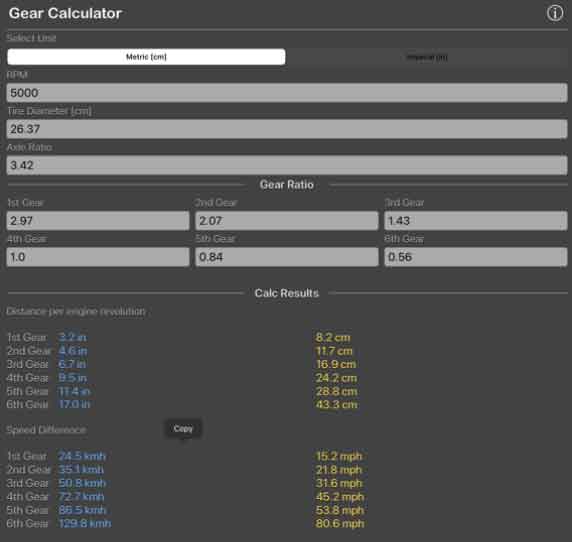Gear meshing and tooth profiles are critical aspects of gear design that significantly impact the performance and durability of gear systems. A gear calculator can help unlock the secrets of gear meshing and tooth profiles by providing accurate calculations and insights. Here’s how a gear calculator assists in understanding gear meshing and tooth profiles:

- Gear Meshing Analysis: A gear calculator enables you to analyze the gear meshing behavior between the driving and driven gears. By inputting parameters such as number of teeth, pitch diameter, and pressure angle, the calculator calculates the contact ratio, meshing stiffness, and contact pattern. It helps you understand how the gears interact and engage with each other during operation.
- Tooth Profile Generation: Gear calculators generate accurate tooth profiles based on the gear parameters you input. They utilize standard gear formulas or advanced algorithms to calculate the precise tooth geometry, such as the involute shape for spur gears or the helical shape for helical gears. The calculator ensures that the generated tooth profiles conform to the desired specifications, allowing for proper gear meshing and load distribution.
- Pressure Angle and Profile Shift: Gear calculators allow you to adjust the pressure angle and profile shift to optimize gear performance. By varying these parameters, you can control the tooth contact pattern, load distribution, and potential stress concentrations. The calculator helps you understand the effects of different pressure angles and profile shifts on gear meshing and tooth profiles, allowing you to make informed decisions.
- Visualize Tooth Profiles: Advanced gear calculators provide visualization capabilities, allowing you to view the generated tooth profiles in a graphical format. This visual representation helps you understand the shape, curvature, and engagement characteristics of the gear teeth. You can assess the quality of the tooth profiles, identify potential issues like undercutting or interference, and make adjustments as necessary.
- Interference and Clearance Analysis: Gear calculators assist in analyzing potential interference or lack of clearance between the gear teeth. They calculate parameters such as the minimum and maximum tooth-to-tooth clearance, ensuring that there is sufficient space for proper gear engagement and preventing any unwanted contact between the teeth. This analysis ensures smooth gear meshing and minimizes the risk of damage or failure.
- Tooth Contact Stress Analysis: Gear calculators help evaluate the contact stresses on the gear teeth. By considering parameters such as the applied load, material properties, and tooth geometry, they estimate the contact stress distribution along the tooth surfaces. This analysis aids in identifying areas of high stress concentration and optimizing the tooth profiles to ensure balanced load distribution and improved gear system durability.
- Backlash Calculation: Gear calculators assist in calculating backlash, which is the amount of play or clearance between mating gears. By inputting the gear parameters, the calculator determines the appropriate amount of backlash based on the desired application requirements. This helps in achieving the right balance between backlash for smooth operation and avoiding excessive backlash that can affect gear precision.
By using a gear calculator, you can unlock the secrets of gear meshing and tooth profiles. The calculator’s analysis, tooth profile generation, and visualization capabilities provide valuable insights into gear engagement, contact patterns, stress distribution, interference, and clearance. This information empowers you to optimize tooth profiles, minimize stress concentrations, and ensure reliable and efficient gear meshing in your gear system design.
